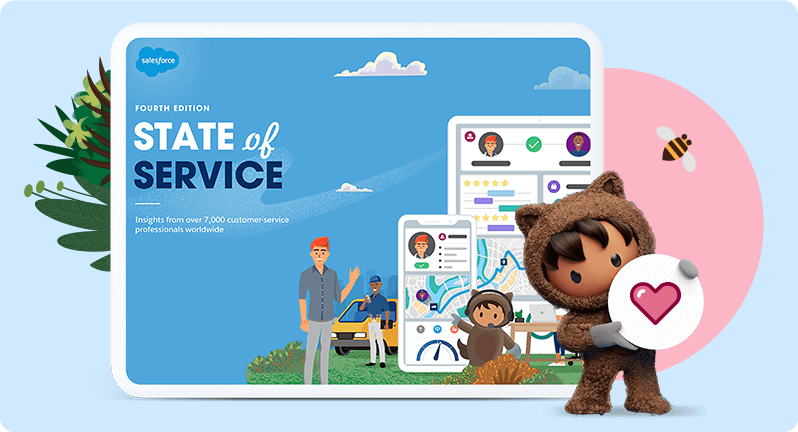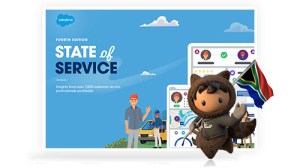For customer-centric service leaders in South Africa, key performance indicators (KPIs) play a key role in maintaining excellent customer service.
Redefined KPIs in South Africa have become a fundamental part of a business’ ability to sustainably make money. Both through reputation and customer retention.
Service decision makers around the world had to earn a reputation for empathy, convenience, and speed. This also came at a time when everyone else was trying to do the same.
Moreover, the COVID-19 pandemic has forced companies everywhere to double down on customer service. In a contracting economy, it’s never been more important (and harder) to keep hold of customers.
The risks of doing nothing are high. But the rewards of getting it right are even higher. After all, the strongest relationships are forged in the toughest times.
The fourth State of Service report looks at how 7,000+ service leaders around the globe are adjusting their KPIs and priorities to reflect that shift in responsibility.
How do KPIs in South Africa fit among the global trends?
Here are the most pressing key performance indicators for service leaders in South Africa to set themselves up for sustainable success.
1. Customer-centric service lies at the heart of Customer Satisfaction
Customer Satisfaction (CSAT) has long been the key metric in defining customer service effectiveness.
For a long time, resolution lay at the heart of a strong CSAT score.
Now, it’s taken on a new depth of meaning. The new measure of customer satisfaction is customer-centricity. And It’s vital for KPIs in South Africa to adapt to this evolved definition.

CSAT defines whether consumers continue to buy – or increase how much – they buy from you, regardless of your products. How you interact with customers is just as important as what you sell them.
And the true marker of customer-centricity lies in empathy and flexibility. Considering, that 71% of consumers say businesses that show empathy during the pandemic earned their loyalty.
High-performing survey respondents made up 74% of those who had clear guidelines over how flexible they could be with customers.
Successful service decision-makers are codifying this approach from the top down. Over 70% of high performers train and actively encourage staff to be flexible with customers.
Counterintuitively, setting clear parameters offers a set amount of ‘wiggle room’ for customer service agents.
It’s vital to strike a balance. Too much rigidity can damage and frustrate a customer’s perception of your brand, while too much freedom leads to inconsistent experiences and lost revenue.
In South Africa, 87% of surveyed service teams changed their policies to provide more flexibility for customers.
2. Agents hold the key to Customer Retention
In an economic crisis, it’s vital to keep customers on board to create reliable, predictable revenue in a time that’s anything but.
That’s why, along with 85% of high performers, customer retention remains a priority KPI for service leaders in South Africa.
And the key to durable customer retention lies with customer service agents. The State of Service report reveals that agent engagement and investment are key to keeping customers.

The people on the customer service front line agree: 79% of surveyed agents believe there’s a direct link between their work and business performance.
As agents take on greater responsibility and become more invested in their role, customer retention soars.
Similarly, management became increasingly aware and appreciative of their service capabilities during the COVID-19 pandemic.
Nearly four out of five agents appreciate the impact of their work on the business. And nearly as many see greater appreciation from management as well.
High-performing organisations hold service teams in high esteem – particularly as they increasingly function as new sales channels.
In fact, high performers are 81% more likely than underperformers to incentivise agents to upsell. This mutual appreciation between management and agents directly influences companies’ ability to maintain customer-centric service.
Appreciated and engaged service agents don’t just retain customers. They create new value, something that’s all the more valuable in an economic crisis.
3. Focus on improving your Customer Effort Score
Customer Effort is a key performance indicator based on the ease of service experience. How easy is it for a customer to resolve an issue?
It’s a question being asked and answered by more and more customer service leaders.
In fact, 71% of service professionals say they’ve changed or prioritised their KPIs due to the pandemic. Between 2018 and 2020, we saw a 31 percentage point increase in companies measuring Customer Effort.
Customer Effort Scores stem from minimal touchpoints linked by logical steps and to-the-point service leading to a fast resolution.
Unifying speed and quality is a key challenge for service teams. However, the two rarely go hand in hand.

We found that 83% of customers expect to interact with someone immediately when they contact a company. And 82% expect to solve complex problems by talking to just one person.
Yet 63% of agents say it’s hard to balance speed with quality service. This is a major obstacle to meeting customer expectations and nurturing strong CSAT.
As a result, we’re now seeing a rise in digital initiatives to meet more customers in more convenient channels. In fact, 78% of surveyed service decision-makers in South Africa are investing in new service technologies.
Service KPIs are evolving in South Africa
Customers are looking to service leaders in South Africa for empathy and easy experiences. And teams are rising to meet them by quickly reevaluating traditional KPIs to align themselves with a new type of consumer.
Service leaders in South Africa who rise to the challenge stand to retain and win more loyal customers. They can emerge from the COVID-19 pandemic stronger than when they went in.
Want to see the whole picture?
The Fourth Edition of the State of Service Report
What do 7,000+ service professionals across 33 countries have to say about the strategic role of customer service today?

























